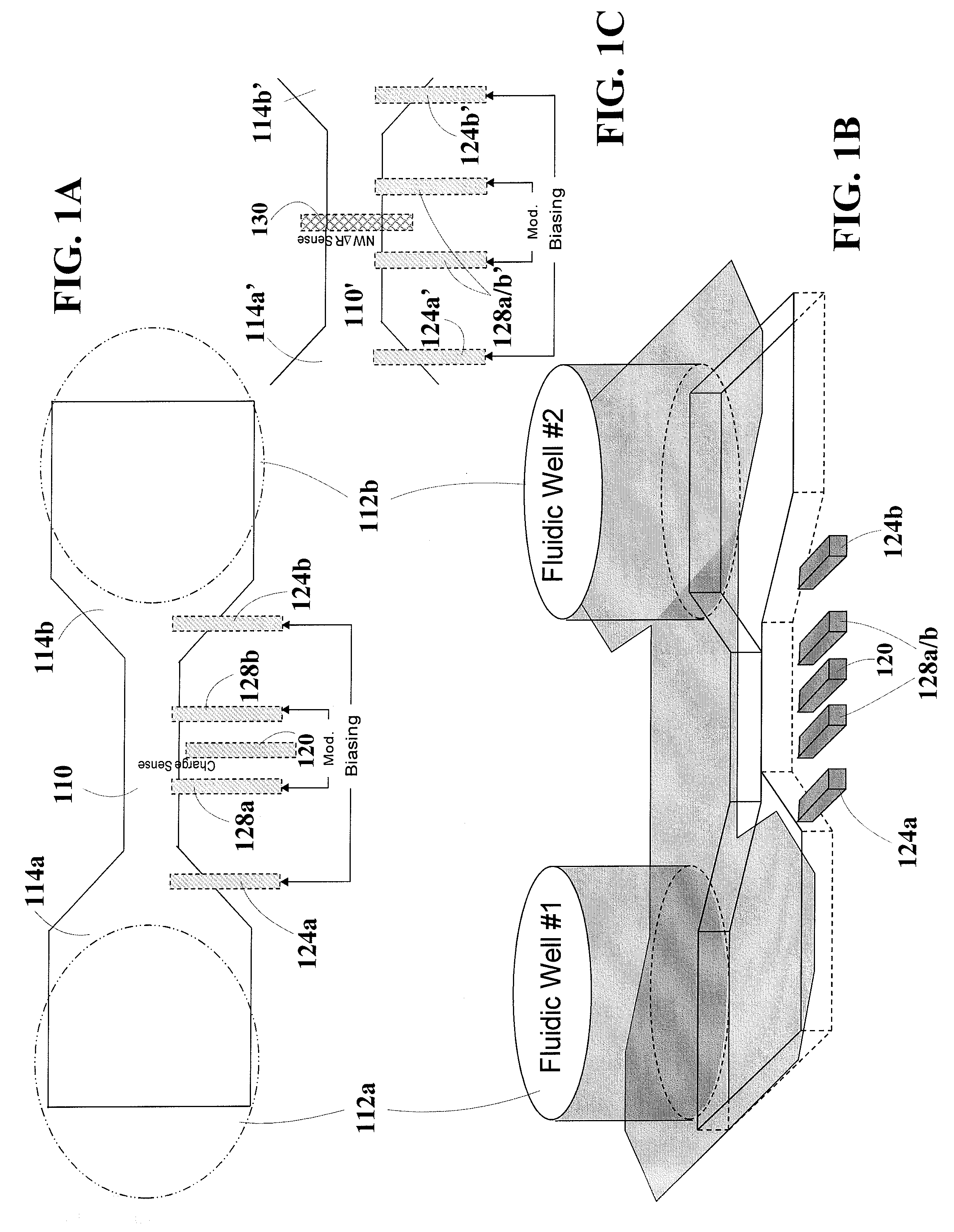Electro-diffusion enhanced bio-molecule charge detection using electrostatic interaction
a biomolecule and electrostatic interaction technology, applied in the field of electrostatic interaction enhanced biomolecule charge detection, can solve the problems of enormous fabrication challenge, impose fundamental limits on the charge sensing capability of electrolyte screening at physiological conditions, and the limitations of proposed devices
- Summary
- Abstract
- Description
- Claims
- Application Information
AI Technical Summary
Benefits of technology
Problems solved by technology
Method used
Image
Examples
Embodiment Construction
[0020]The present disclosure is believed to be useful for a variety of applications involving the sensing / detection of bio-molecules from their characteristic charges. As nonlimiting examples, these applications include gene sequence applications such as those involving the detection of DNA hybridization based on oligomer charges doubling after hybridization, applications involving immune responses based on change of charges from antibody-antigen binding, detection of protein phosphorylation as in applications involving neutral hydroxyl group replaced by negatively charged phosphate and other applications for general charge-based particle detection such as charged particles in industrial waste. While the present disclosure is not limited to such applications, various aspects of the disclosure may be appreciated through a discussion of various examples using this context.
[0021]Aspects of the present disclosure are directed to the sensing and detection of bio-molecules in a sample by ...
PUM
| Property | Measurement | Unit |
|---|---|---|
| Width | aaaaa | aaaaa |
| Electrical conductance | aaaaa | aaaaa |
Abstract
Description
Claims
Application Information
 Login to View More
Login to View More - R&D
- Intellectual Property
- Life Sciences
- Materials
- Tech Scout
- Unparalleled Data Quality
- Higher Quality Content
- 60% Fewer Hallucinations
Browse by: Latest US Patents, China's latest patents, Technical Efficacy Thesaurus, Application Domain, Technology Topic, Popular Technical Reports.
© 2025 PatSnap. All rights reserved.Legal|Privacy policy|Modern Slavery Act Transparency Statement|Sitemap|About US| Contact US: help@patsnap.com



